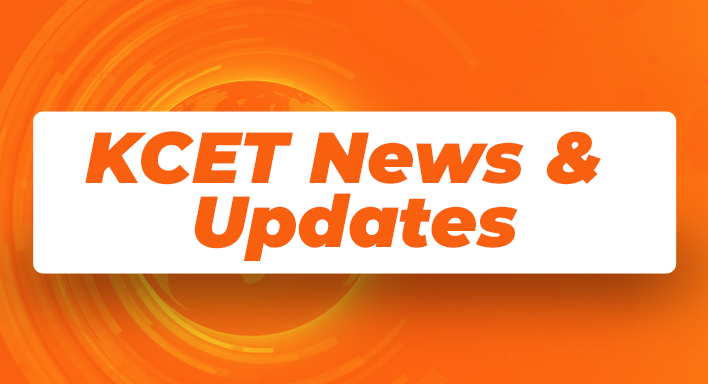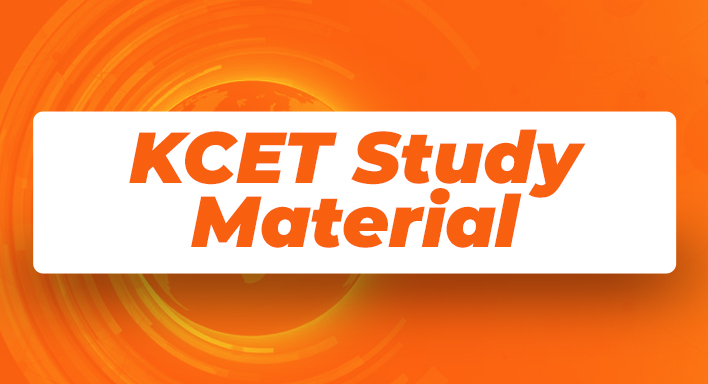KCET Syllabus 2025
Navigating the KCET Exam: Unveiling the Syllabus and Pattern
In the dynamic landscape of the Karnataka Common Entrance Test (KCET), success hinges not only on a profound understanding of the syllabus but also on deciphering the intricacies of the exam pattern. Let’s embark on a journey to unravel the correlation between the KCET exam pattern and syllabus, providing aspirants with a strategic roadmap for their preparation.
Understanding the KCET Exam Pattern:
The KCET exam pattern serves as the blueprint that outlines the structure of the examination. It encompasses the number of papers, the type of questions, marking schemes, and the overall duration of the test. For KCET, the exam typically comprises four papers – Physics, Chemistry, Mathematics, and Biology – each carrying equal weightage.
Aligning with the KCET Syllabus:
Complementary to the exam pattern is the KCET syllabus, a comprehensive guide that delineates the topics and subjects covered in each paper. From biology to mathematics, candidates must navigate through a diverse array of subjects. This section offers an in-depth breakdown, ensuring aspirants are well-versed in the core concepts stipulated by the Karnataka Examination Authority.
| KCET Physics Syllabus 2025 | |
| Chapters | Deleted Portion |
| Physical World | Physics- Scope and excitement |
| Physics- Technology and society | |
| Nature of physical laws | |
| Units and Measurement | NIL |
| Motion in a straight line | Frame of reference: Position-time graph, speed and velocity |
| Motion in a plane | NIL |
| Laws of Motion | Intuitive concept of forces |
| Inertia | |
| Newton first law of motion; momentum | |
| Newton’s second law of motion; impulse | |
| Newton third law of motion | |
| Work, Power, Energy | NIL |
| System of particles and rotational motion | Statement of parallel and perpendicular axes theorem and their applications |
| Gravitation | Kepler’s law of planetary motion |
| Acceleration due to gravity | |
| Mechanical properties of solid | Elastic behavior |
| Shear modulus of rigidity | |
| Poisson’s ratio | |
| Elastic energy | |
| Mechanical properties of fluid | NIL |
| Thermal properties of matter | Heat and temperature |
| Heat transfer | |
| Conduction | |
| Convection | |
| Radiation | |
| Thermodynamics | Heat engine |
| Refrigerator | |
| Kinetic Theory | NIL |
| Oscillation | NIL |
| Waves | Doppler effect |
| KCET Chemistry Syllabus 2025 | |
| Chapters | Deleted Portion |
| Some basic concepts of chemistry | Nature of matter |
| Laws of chemical combination | |
| Dalton’s atomic theory | |
| Structure of atom | Discovery of subatomic particles |
| Atomic models | |
| Classification of elements and periodicity properties | Significance of classification, brief history of development of periodic table |
| Chemical bonding and molecular structure | NIL |
| States of matter | Liquefaction of gases |
| Critical temperature | |
| Kinetic energy and molecular speed | |
| Liquid state-vapour pressure | |
| Viscosity and Surface tension (qualitative idea only , no mathematical derivations) | |
| Thermodynamics | Heat capacity and specific heat capacity |
| Criteria for equilibrium | |
| Equilibrium | Hydrolysis of salts (elementary idea) |
| Henderson equation | |
| Redox reaction | Applications of redox reaction |
| Hydrogen | Preparation, properties and uses of hydrogen, hydrogen peroxide preparation, and structure and uses |
| S-Block Elements | Preparation and properties of some important compounds: Sodium carbonate, Sodium chloride, Sodium hydroxide, Sodium hydrogen carbonate. |
| Biological importance of Sodium and Potassium. | |
| Calcium oxide and calcium carbonate and their industrial uses | |
| Biological importance of Magnesium and Calcium | |
| P-Block Elements | Some important compounds: Borax, Boric acid, Hydrides |
| Aluminium reactions with acids and alkalies and uses | |
| Carbon, Silicon and their uses | |
| Organic Chemistry – Some basic principles and techniques | Methods of purification, qualitative and quantitative analysis |
| Hydrocarbons | Free radical mechanism of halogenation, combustion and pyrolysis |
| Environmental Chemistry | Entire unit deleted |
| KCET Mathematics Syllabus 2025 | |
| Chapters | Deleted Portion |
| Sets | Difference of sets |
| Complement and properties of sets | |
| Relation and Functions | RxRxR |
| Sum, Difference, Product and Quotients of functions | |
| Trigonometric functions | General solution of trigonometric equations of type: sin y = sin a, cos y = cos a and tan y = tan a |
| Principal of Mathematical Induction | NIL |
| Complex numbers and Quadratic equation | Polar representation of complex numbers. |
| Square root of a complex number | |
| Linear inequalities | NIL |
| Permutation and Combination | Derivation of formula for nPr and nCr |
| Binomial Theorem | Entire chapter is deleted |
| Sequence and series | Formulae for special sums |
| Straight lines | Shifting of origin, Equation of family of lines passing through the point of intersection of two lines |
| Conic sections | Entire chapter is deleted |
| Introduction to 3-D geometry | NIL |
| Limits and Derivatives | NIL |
| Mathematics reasoning | Entire chapter is deleted |
| Statistics | Analysis of frequency distribution with equal means but different variance |
| Probability | Axiomatic probability, connection with other theories of earlier classes |
| KCET Biology Syllabus 2025 | |
| Chapters | Deleted Portion |
| The living world | Taxonomy and systematics |
| Tools to study taxonomy | |
| Biological classification | NIL |
| Plant Kingdom | Angiosperm – classification upto class, characteristics features and examples |
| Animal Kingdom | NIL |
| Morphology of flowering plants
| Morphology and modification, Morphology of different parts of flowering plants – root, stem, leaf, fruit and seed |
| Description of families – Fabaceae | |
| Anatomy of flowering plants | Anatomy and functions of different tissues and tissues systems in dicots and monocots secondary growth |
| Structural organization in animals | Morphology, Anatomy and functions of different system of an insect |
| Cell – The unit of life | NIL |
| Biomolecules | |
| Cell cycle and Cell division | |
| Transport in Plants | Movement of water, gases and nutrients; cell to cell transport; diffusion, facilitated diffusion, active transport, plant-water relation, imbibition, water potential, osmosis, plasmolysis, long distance transport of water, transport of food |
| Mineral nutrition | Essential minerals, macro and micro nutrients and their role, deficiency symptoms, mineral toxicity, elementary idea of hydroponics as a method of study mineral nutrition, nitrogen metabolism, nitrogen cycle, biological nitrogen fixation. |
| Photosynthesis in higher plants | NIL |
| Respiration in plants | NIL |
| Plant – Growth and Development | Seed germination, phases of plant growth and plant growth rate, conditions of growth, differentiation, differentiation and redifferentiation, sequence of developmental processes in a plant cell, Seed dormancy, vernalisation, photoperiodism |
| Digestion and Absorption | Alimentary canal and digestive glands, role of digestive enzymes and gastrointestinal hormones, Peristalsis, Digestion, Absorption and assimilation of proteins, Carbohydrates and fats, Calorific value of proteins, Carbohydrates and Fats, Egestion, Nutritional and digestive disorders – PEM indigestion, constipation, vomiting, jaundice, diarrhea |
| Breathing and exchange of gases | NIL |
| Body fluids and circulation | NIL |
| Excretory products and their elimination | NIL |
| Locomotion and movement | Types of movement, ciliary flagellar, muscular, Skeletal system and its function joints, disorder of muscular and skeletal system, myasthenia gravis, tetany, muscular dystrophy, arthritis, osteoporosis, gout |
| Neural control and coordination | NIL |
| Chemical coordination and integration | Reflex actions, Sensory perception, Sense organs, Elementary structure and functions of eye and ear |

Strategic Preparation Tips:
To ace the KCET 2025 exam, candidates need to synchronize their preparation with the dual facets of the exam pattern and syllabus. This involves a meticulous study plan that allocates time efficiently to cover each subject and practice answering questions within the stipulated time frames.
In essence, we serve as a compass, guiding aspirants through the multifaceted terrain of the KCET exam. By comprehending the symbiotic relationship between the exam pattern and syllabus, candidates can embark on their preparation journey with confidence, armed with the knowledge needed to navigate the KCET successfully.
Adaptability to Changing Educational Trends:
In an ever-evolving educational landscape, the KEA remains adaptive, periodically reviewing and updating the syllabus to align with contemporary educational standards. This adaptability ensures that the KCET syllabus reflects the latest advancements in academic domains. Refer to the latest KCET news and updates for more.
As we embark on the journey toward the Karnataka Common Entrance Test (KCET) necessitates a comprehensive understanding of its foundational component—the syllabus. The KCET syllabus, serves as the roadmap for aspiring candidates, outlining the topics and subjects that will be evaluated in this crucial examination. In this introductory exploration, we delve into the intricate details of the KCET entrance exam syllabus, unraveling its layers and shedding light on its comprehensive nature. Understanding the KCET full syllabus 2025, is paramount for candidates aiming not only to navigate the examination successfully but also to strategically plan their preparation. Join us on this journey through the fundamental elements of the KCET syllabus, where each facet holds significance in shaping the academic destiny of those aspiring to conquer this prestigious examination.
At the heart of the Karnataka Common Entrance Test (KCET) lies the meticulously crafted syllabus by the Karnataka Examinations Authority (KEA). The KEA, with its unwavering commitment to fair and inclusive evaluations, plays a pivotal role in shaping the academic journey of aspiring students.
The KEA, as the governing body responsible for conducting KCET, undertakes the responsibility of designing a syllabus that not only aligns with academic standards but also ensures a thorough assessment of students’ knowledge and skills. This commitment stems from a dedication to providing a level playing field for all candidates, regardless of their educational backgrounds.













Get Social